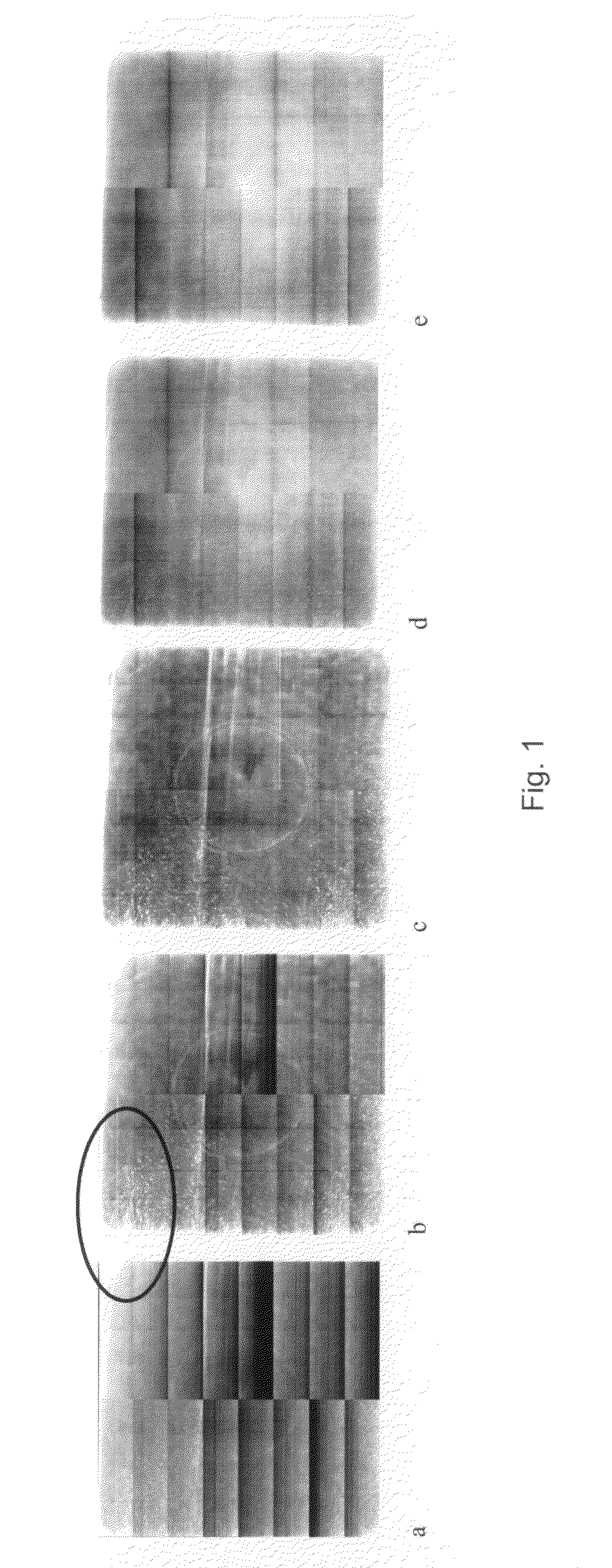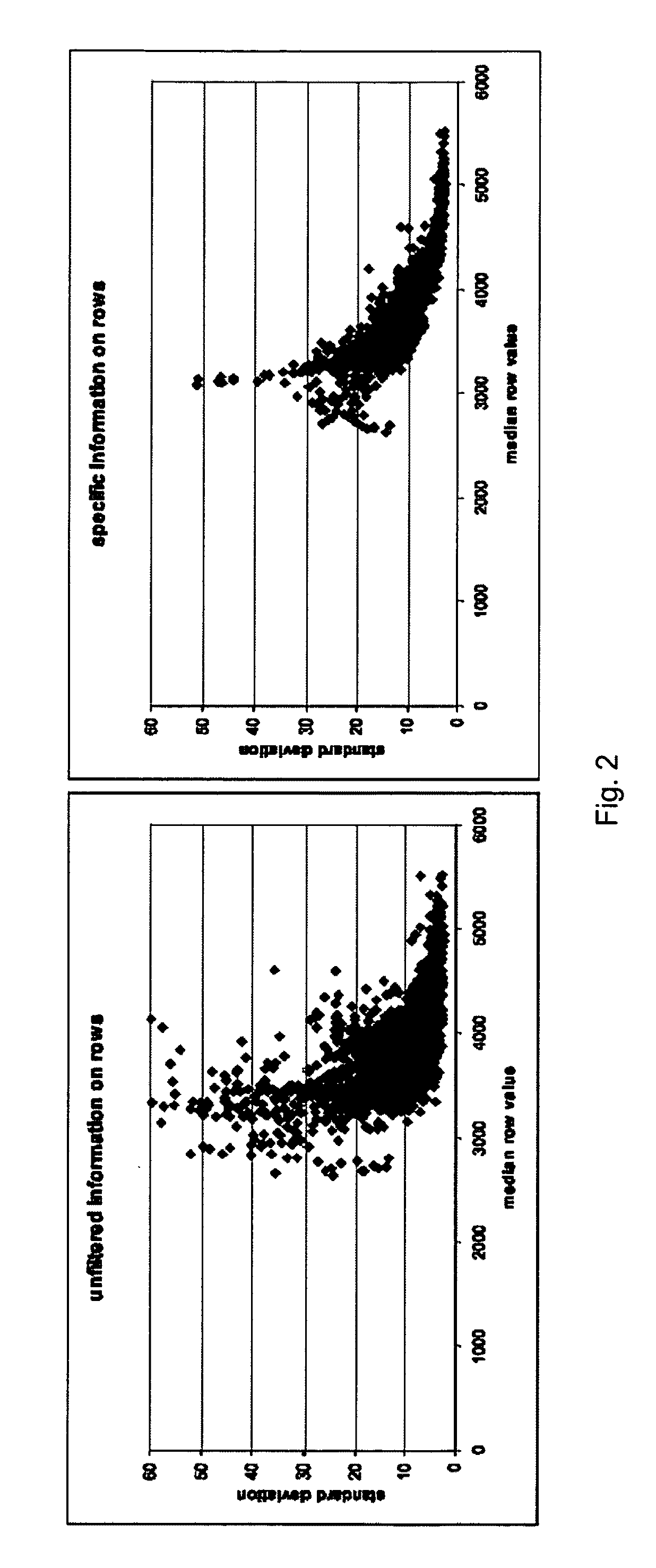Methods for improving image quality of image detectors, and systems therefor
a detector and image technology, applied in image enhancement, instruments, therapy, etc., can solve the problems of small bias voltage of the sensor for proper operation, errors in the calculated intensity of the associated image pixel, and other imaging devices that convert radiation to electrical charge suffer from similar dark current problems, so as to improve long-term stability and eliminate line artifacts
- Summary
- Abstract
- Description
- Claims
- Application Information
AI Technical Summary
Benefits of technology
Problems solved by technology
Method used
Image
Examples
Embodiment Construction
[0066]Background images of older panels show disturbing horizontal lines parallel to the long sides of the panel. This is shown, as an example, in FIG. 1. FIG. 1 shows uncorrected images of an old panel at different doserates. As can be seen, the dark offset stripes are rapidly disappearing with increasing doserate which is in FIG. 1a 7 MU / min, FIG. 1b 25 MU / min, FIG. 1c 50 MU / min, FIG. 1d 100 MU / min and FIG. 1e 400 MU / min. These high intensity (dark) rows in the offset image vanish rapidly on irradiation with very low doserates (FIGS. 1a-c), and on increasing doserates the stripes turn continuously lighter, indicating that the relative pixel sensitivity for the pixels in such poor rows is significantly decreasing at very low doserates to values comparable to better pixels in other rows.
[0067]The remaining stripes in the images acquired at higher doserates—deviations in the response of different rows in different sub panels—are not necessarily located in the same rows as seen in the...
PUM
 Login to View More
Login to View More Abstract
Description
Claims
Application Information
 Login to View More
Login to View More - R&D
- Intellectual Property
- Life Sciences
- Materials
- Tech Scout
- Unparalleled Data Quality
- Higher Quality Content
- 60% Fewer Hallucinations
Browse by: Latest US Patents, China's latest patents, Technical Efficacy Thesaurus, Application Domain, Technology Topic, Popular Technical Reports.
© 2025 PatSnap. All rights reserved.Legal|Privacy policy|Modern Slavery Act Transparency Statement|Sitemap|About US| Contact US: help@patsnap.com



